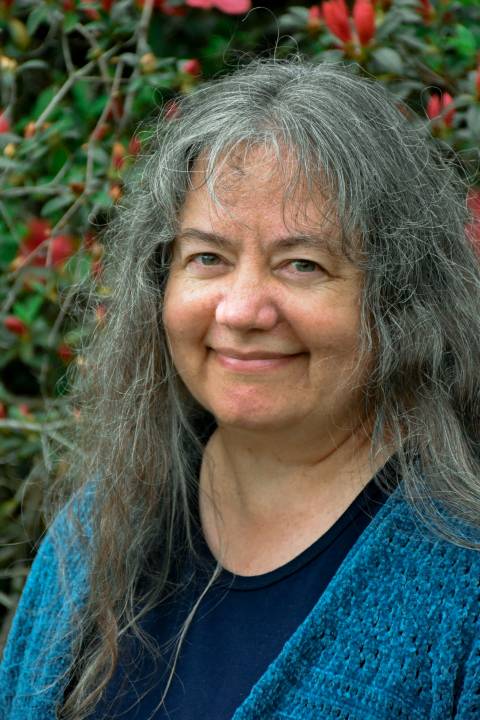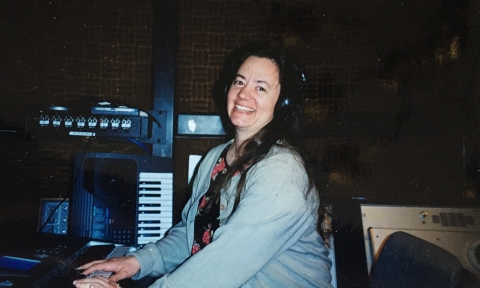As a land management agency, the U.S. Fish and Wildlife Service’s biggest contribution to fighting climate change climate change
Climate change includes both global warming driven by human-induced emissions of greenhouse gases and the resulting large-scale shifts in weather patterns. Though there have been previous periods of climatic change, since the mid-20th century humans have had an unprecedented impact on Earth's climate system and caused change on a global scale.
Learn more about climate change is protecting habitats — such as forests, peatlands and salt marshes — that capture and store carbon. But Liz Dawson says that’s not enough; we also need to set an example for others by taking concrete actions to reduce our carbon-emitting activities, as reflected in our Climate Change Action Program framework.
“Restoring habitat may be more impactful than any other measures, but we should still do other things,” she said. “If we don’t set an example, we’re not achieving our mission.”
Dawson, who is stationed at the Northeast Regional Office in Hadley, Massachusetts, is an environmental compliance coordinator working for the Infrastructure Management Division of the National Wildlife Refuge System. Although trained to design buildings, she now focuses on reducing infrastructure’s effects on the climate. She also serves as the agency's national solid waste manager.
Waste whittler
The Service's climate change framework, published in October 2021, serves as a foundation for the agency’s climate response. It calls for achieving zero net emissions of greenhouse gases by 2050.
In addition, President Biden’s December 2021 Executive Order 14057: “Catalyzing Clean Energy Industries and Jobs Through Federal Sustainability" set requirements for federal agencies to reduce their impact on the environment and minimize their contributions to climate change.
“Methane is a big concern,” said Dawson, “so these efforts matter.” Organic materials placed in landfills decompose and release the harmful gas, which is more than 25 times as potent as carbon dioxide at trapping heat in the atmosphere. “The good thing about reporting is that everyone thinks about it more,” she added.
The most commonly re-used or recycled product at agency facilities is grass. Grasscycling is the practice of leaving clippings where they land when mowing, instead of collecting them. We also do a good job of re-using and recycling scrap metals, asphalt and concrete.
The Materials Exchange Tool launched in 2022 to help field stations reduce waste generation by sharing excess hazardous and non-hazardous materials, everything from paint to surplus fencing, rather than disposing of them in landfills. We’re also re-thinking the need for hazardous chemicals like formaldehyde — used to control parasites on hatchery fish and eggs — and pesticides.
Limitless energy source
Promoting sustainability is nothing new for Dawson. In the early 2000s, she documented the region’s ecological footprint by calculating its carbon dioxide emissions. It was the first such exercise in the Service.
“When Headquarters decided to require annual emissions reports, they called me for guidance,” she added.
Dawson was a member of the project planning team for the Cusano Environmental Education Center at John Heinz National Wildlife Refuge at Tinicum in Philadelphia. The facility opened in 2001 and broke new ground for sustainable buildings in the Service and beyond. It won multiple awards for its green design, which included a heat-pump system, 20 years before they captured public attention.
As chair of the Northeast Region’s Green Team in the 2010s, Dawson was instrumental in installing rooftop solar panels on the leased regional office building. She spearheaded Leadership in Energy and Environmental Design green building certification for the facility, achieving a gold LEED rating. At the Green Team’s urging, the building owner agreed to upgrade lighting, water efficiency and the heating and air conditioning system during the lease renewal process. The Green Team received two Massachusetts Department of Transportation ECO awards for promoting sustainable workforce commuting options.
Because building energy-use is a large part of the Service’s carbon footprint, Dawson has long promoted an energy savings performance contract for facilities in the region. Instead of relying on upfront funding to pay for energy retrofits and staff to maintain systems, this type of contract allows projects to be financed and repaid over 20-plus years, while contractors guarantee their performance.
“The challenge is we’re small and spread apart,” she said. “We’re talking with the Department of Energy and have a list of facilities, mostly fish hatcheries, that may work.”
Although rising interest rates are a concern, there’s support throughout the Service, including in leadership, and the list of energy-savings contractors is growing. Dawson is optimistic the effort to use an energy savings performance contract for facilities will succeed this time around.
Maker of lemonade and music
Dawson is a lifelong resident of Western Massachusetts. An architecture internship at age 17 led her to completing her bachelor’s degree in architecture at Carnegie Mellon University and becoming a registered architect. Business was booming in the 1980s, but when the economy slowed in the early 90s, she was laid off.
Architecture’s loss was wildlife’s gain. When the Service’s Northeast Regional Office moved to nearby Hadley in 1992, Dawson was hired as a clerk. From there, she moved into the Engineering Division as an architectural technician and, later, an architect. Her experience with building design facilitated her transition to environmental compliance. She has a Master of Business Administration from the University of Massachusetts and a master’s in sustainability and environmental management from Harvard University Extension School.
Dawson is also a part-time organist. She wrote and performed on piano two instrumental songs — "Hope" and "Soaring" — for "Songs of the System," the musical collaboration by Service employees issued in 2003 to mark the centennial of the National Wildlife Refuge System. She plans to participate in the upcoming “Songs for Species” effort that celebrates 50 years of the Endangered Species Act.
“I was excited that my songs were part of the project last time,” she said. “Someone used one as their outgoing message [for voicemail].”
A climate can-do attitude
Although we’re barraged with bad climate news, Dawson strikes a positive tone.
“I believe that when people recognize a problem that they work to solve it,” she said. “Someday, hopefully soon, we will turn around the issue of climate change. I hope my efforts in the struggle helped lay the groundwork for the eventual solution.”
When asked about her future career plans, she replied, “At present, I am trying to be the best regional environmental compliance coordinator that I can be.”
We would all do well to adopt her attitude and focus on what we can do right now to make the world a more livable place in the future.




